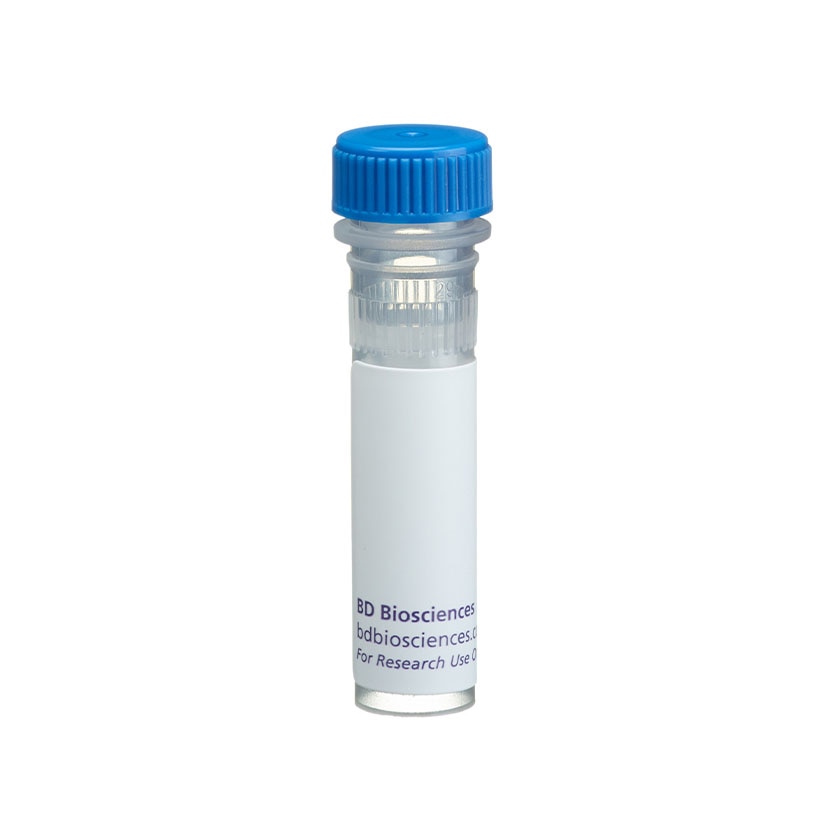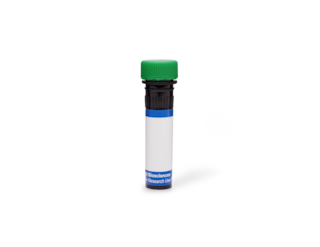-
Reagents
- Flow Cytometry Reagents
-
Western Blotting and Molecular Reagents
- Immunoassay Reagents
-
Single-Cell Multiomics Reagents
- BD® OMICS-Guard Sample Preservation Buffer
- BD® AbSeq Assay
- BD® Single-Cell Multiplexing Kit
- BD Rhapsody™ ATAC-Seq Assays
- BD Rhapsody™ Whole Transcriptome Analysis (WTA) Amplification Kit
- BD Rhapsody™ TCR/BCR Next Multiomic Assays
- BD Rhapsody™ Targeted mRNA Kits
- BD Rhapsody™ Accessory Kits
- BD® OMICS-One Protein Panels
- BD OMICS-One™ WTA Next Assay
-
Functional Assays
-
Microscopy and Imaging Reagents
-
Cell Preparation and Separation Reagents
Old Browser
This page has been recently translated and is available in French now.
Looks like you're visiting us from {countryName}.
Would you like to stay on the current location site or be switched to your location?
BD Pharmingen™ Purified Rat Anti-Mouse CD56
Clone 12F8 (RUO)


Regulatory Status Legend
Any use of products other than the permitted use without the express written authorization of Becton, Dickinson and Company is strictly prohibited.
Preparation And Storage
Recommended Assay Procedures
In western blot analysis, clone 12F8 recognizes N-CAM as a broad band ranging from 90 kDa to more than 200 kDa, depending on forms present. Mouse embryonic brain is suggested as a positive control.
Product Notices
- Since applications vary, each investigator should titrate the reagent to obtain optimal results.
- Please refer to www.bdbiosciences.com/us/s/resources for technical protocols.
- Caution: Sodium azide yields highly toxic hydrazoic acid under acidic conditions. Dilute azide compounds in running water before discarding to avoid accumulation of potentially explosive deposits in plumbing.
Companion Products


Cell adhesion molecules are present on the surface of most cells (CAMs). Neural CAMs play a key role in the development of the embryonic nervous system. Expression of neural CAMs provides neurons with a means of attaching to and interacting with other cells and the extracellular matrix. The cell surface adhesion molecule N-CAM is important in mediating initial axon outgrowth and cell migration during development. In the mature nervous system, N-CAM is important in regulating cell interactions. Additionally, the expression of several CAMs, including N-CAM is altered following injury to the peripheral nervous system. Antibodies recognizing specific CAM forms have been instrumental in defining their roles in the nervous system. Monoclonal 12F8 specifically recognizes the polysialic acid on N-CAM. The embryonic form of N-CAM is highly polysialylated during development which is later replaced by the lesspolysialic acid (PSA)-laden mature forms of N-CAM. Clone 12F8 recognizes the polysialic acid on N-CAM.2 It recognizes all species tested, from fish through human. 12F8 reacts with a neuraminidase-sensitive epitope of N-CAM. The epitope recognized by 12F8 is more highly expressed in the embryonic than in the adult brain. As such, 12F8 is useful for distinguishing embryonic forms of N-CAM from adult forms which have decreased polysialic acid expression. In addition to brain, 12F8 reacts with some non-neuronal cells. However it does not appear to recognize mouse NK cells. Mouse membrane fractions were used as immunogen.
Development References (6)
-
Chuang W, Lagenaur CF. Central nervous system antigen P84 can serve as a substrate for neurite outgrowth. Dev Biol. 1990; 137(2):219-232. (Biology). View Reference
-
Chung WW, Lagenaur CF, Yan Y, and Lund JS. Developmental expression of neural cell adhesion molecules in the mouse neocortex and olfactory bulb. J Comp Neurol. 1991; 314:290-305. (Clone-specific: Western blot).
-
Hankin MH, Lagenaur CF. Cell adhesion molecules in the early developing mouse retina: retinal neurons show preferential outgrowth in vitro on L1 but not N-CAM. J Neurobiol. 1994; 25(5):472-487. (Clone-specific: Immunohistochemistry). View Reference
-
Miller PD, Chung WW, Lagenaur CF, and DeKosky ST. Regional distribution of neural cell adhesion molecule (N-CAM) and L1 in human and rodent hippocampus. J Comp Neurol. 1993; 327:341-349. (Clone-specific: Immunohistochemistry).
-
Miller PD, Styren SD, Lagenaur CF, DeKosky ST. Embryonic neural cell adhesion molecule (N-CAM) is elevated in the denervated rat dentate gyrus. J Neurosci. 1994; 14(7):4217-4225. (Clone-specific: Immunohistochemistry). View Reference
-
Walsh FS, Doherty P. Factors regulating the expression and function of calcium-independent cell adhesion molecules. Curr Opin Cell Biol. 1993; 5(5):791-796. (Immunogen: Immunohistochemistry). View Reference
Please refer to Support Documents for Quality Certificates
Global - Refer to manufacturer's instructions for use and related User Manuals and Technical data sheets before using this products as described
Comparisons, where applicable, are made against older BD Technology, manual methods or are general performance claims. Comparisons are not made against non-BD technologies, unless otherwise noted.
For Research Use Only. Not for use in diagnostic or therapeutic procedures.